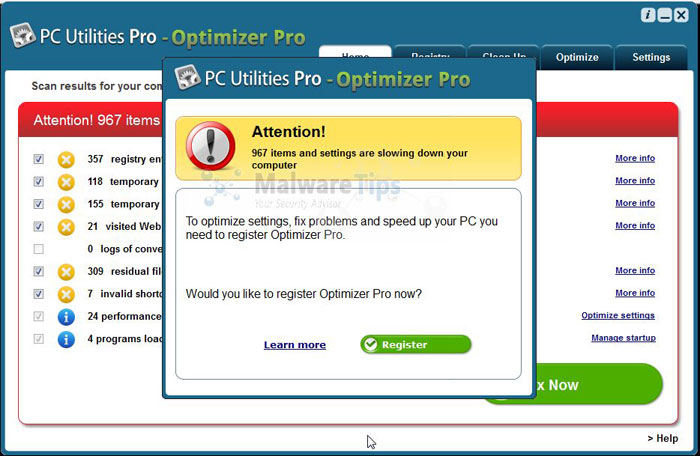For a number of years the ‘market’ for fake scanning, cleaning, and optimising programs seems to have been growing at a pace. The modus operandi of these ‘utilities’ is to offer a free program to scan and analyse a user computer. During the scan invariably some error, issue, or sub optimal setting will be discovered. Going for the pay-off, the program will then “use alarming, coercive messages to scare customers into buying a premium version of the same program,” writes Barak Shein on the Microsoft Windows Blog.

Avoid this kind of thing
Thankfully, the Windows Defender Security Research head says that Microsoft is gearing up to address this coercive scare-ware threat via an update to Windows Defender. Actually it is the “evaluation criteria to specify that programs must not use alarming or coercive messaging,” that is being updated rather than the Windows Defender app itself. This evaluation criteria determines what programs are identified as malware and unwanted software and it will include programs that display coercive messaging in the near future.
To be clear, the updated section of the Windows Defender unwanted software evaluation criteria is reproduced verbatim, in italics, below:
Unwanted behaviours: coercive messaging
Programs must not display alarming or coercive messages or misleading content to pressure you into paying for additional services or performing superfluous actions.
Software that coerces users may display the following characteristics, among others:
- Reports errors in an exaggerated or alarming manner about the user’s system and requires the user to pay for fixing the errors or issues monetarily or by performing other actions such as taking a survey, downloading a file, signing up for a newsletter, etc.
- Suggests that no other actions will correct the reported errors or issues
- Requires the user to act within a limited period of time to get the purported issue resolved

Another of the many 'optimisers' that are just after your cash
From March 2018 the above criteria will come into force. If, from that date onwards, Windows Defender Antivirus or other Microsoft security products discover coercive scare-ware, the so-judged software will be removed.
Concluding his blog post on the Windows Defender criteria update, Shein asks developers to verify their apps via the Windows Defender Security Intelligence portal, and for users to submit programs that exhibit unwanted behaviours related to coercive messaging and similar.













